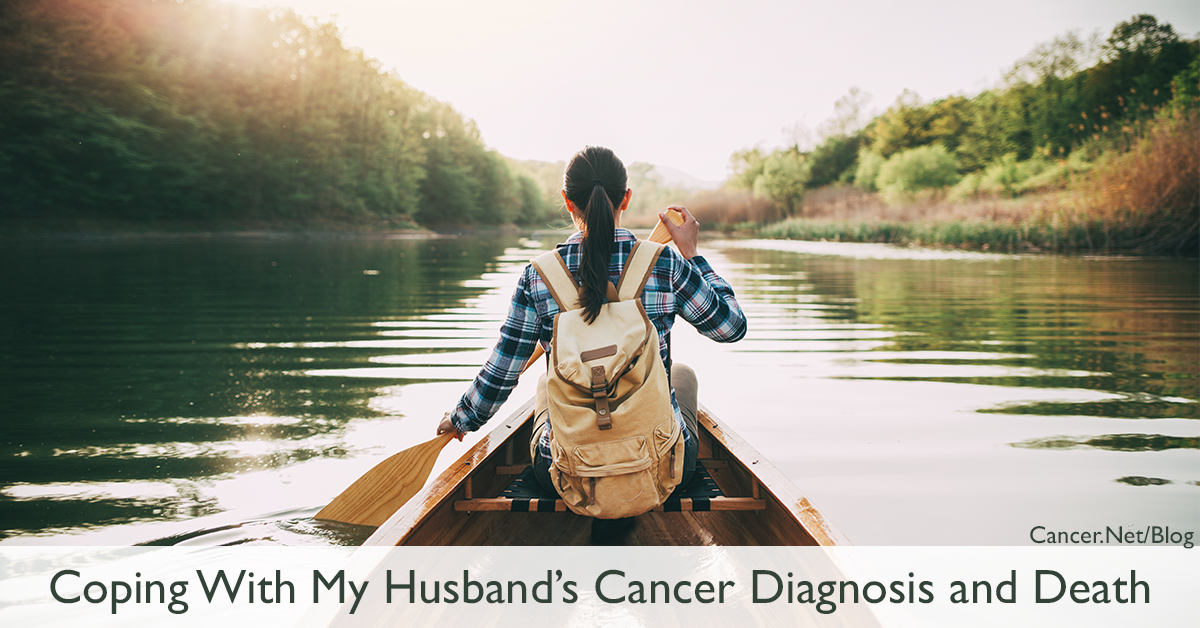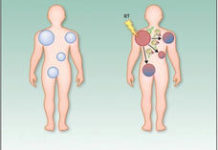
Rachel Engstrom is an author who lives in the Twin Cities, Minnesota. She has a master’s degree in social work and is a certified health education specialist. Her book on being a cancer wife and then widow was a labor of love as she relived her journey to help those going through experiences similar to hers. You can follow her on Instagram and Facebook.
In 2011, when I was 28 years old, my 35-year-old husband was diagnosed with acute lymphoblastic leukemia. I felt like I was tossed into a river in a canoe without a paddle, a life jacket, any directions of where to go, or a survival kit to help keep me afloat. I had no control over the rate or speed of the river’s flow, and I had minimal visibility of what curves or rapids were up ahead. I didn’t know where this river may lead. The canoe was open to the vulnerabilities of the river, just like I was vulnerable to the unknown cancer world.
I spent quite a bit of time looking up cancer resources online to try to figure out how to navigate the new choppy waters I was on. I was quite alone on this path, as I was so young, and I didn’t know anyone at the time who was in the same situation as me. But within the first week of Grayson’s diagnosis, I stumbled on the CaringBridge website, which became a life jacket for me. I was able to give updates on Grayson’s cancer journey, and I could feel the emotional support from our network of family and friends. On Facebook, I created a “Team Grayson” page to update friends and family on there as well.
I found that these social media sites were able to help sustain me through the cancer process, as I traveled down the river. The connection of support while I expressed my hopes, fears, stressors, and joys along the journey were more helpful than I can ever say. I had to keep working full-time during the 2 years and 3 months of my late husband’s illness. That left me little time to have a “normal” life outside of the clinic, hospital walls, and our home, which made the social connections even more important.
Throughout Grayson’s cancer diagnosis, I had to learn how to flow with the river and live in the moment. I had to cherish each day for what it was, as the river’s flow never stopped. My older brother told me that I could choose to be better or bitter with this path I had been involuntarily put on. I learned how to find the resources needed to navigate the choppiest rapids, and I paddled the best I could with what I had. I wasn’t always cheery or happy, but I slept, ate, worked, and did the best I could to be with my husband as much as possible. And along the way, I met some really cool people in the cancer community.
After Grayson died 2 days after my 31st birthday, I was once again alone. This time, I was on my own adventure in a kayak on an open lake. However, this time there were calmer waters. I was more enclosed, but I knew others in my circle who had been where I was, having lost their parents, siblings, and others—but not their own spouses. I missed Grayson terribly and had to figure out how to live my life without him, but I felt peace in knowing he was no longer in so much pain.
To help cope, I read a few books on grief and decided to take classes on grief and loss to try to understand it better. I ultimately found out that only time and patience was what would heal me, despite wanting time to fast forward some days. I went to Alaska for a couple of weeks alone and spent time in nature, did yoga, and spent some time with friends. But mostly, I slept and tried to recover from the fast-paced world of cancer.
Grief and loss are a rollercoaster of a process, and I was quite surprised to find out how many ups and downs I would have. I found out it would bite me when I’d least expect it. Grief and loss, just like cancer, is something that I had to learn to embrace whether I liked it or not, as it was something I could not control. If you’re willing to reach out to others and tell them you need help, you are making great strides for yourself and those closest to you.
Nine months after Grayson died, I decided to write a book to help those who were going through what I was. It’s amazing how fast things evolve these days. Back in 2011, when Grayson was diagnosed, there were support organizations out there, but not as many as there are today. In 2013, there certainly were not the number of grief and loss support groups or resources that exist today either. I spent a total of about 2 years drafting, crafting, writing, crossing out, and rewriting pages of the book, just as I’d done with my life as a widow. I had to learn what to do by trial and error as I, again, did not have a guidebook to lead me.
I like to tell those going through the cancer process and/or who are on their grief and loss journey that it is all doable. I am 9 years out from Grayson’s diagnosis and 7 and a half years out from his death. Learning from others’ journeys and paths and adding bits and pieces to my own survival kit is what ultimately helped me successfully stay afloat, whether I was in that canoe on the rapid river or a kayak on a peaceful lake. The grief that comes with the loss of a spouse is significant, but always remember there are people and resources there to help.





